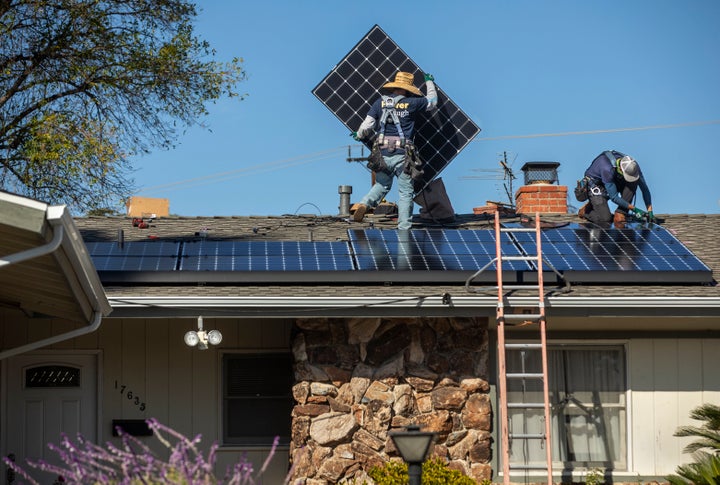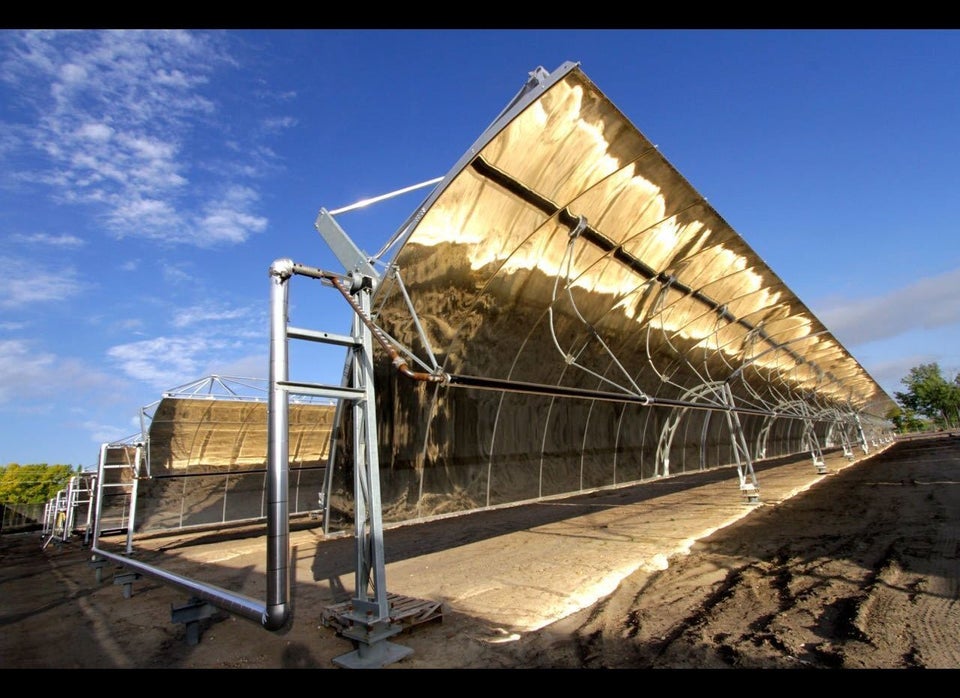
Every year, the industry-backed Solar Foundation puts out a job census based on surveys of companies manufacturing, selling and installing photovoltaic panels across the country. For the past several years, the annual report has excluded how many solar workers belong to unions.
“The last time we were tracking union labor, it was something like 3% of the overall workforce,” Ed Gilliland, the foundation’s senior director, told HuffPost in 2019. “It was a small number. We think it’s probably still pretty small.”
So when the group compiled its survey results this year, Gilliland reached a surprising conclusion: More than 10% of the industry had now unionized.
The finding, coupled with a rosy picture of wages compared to other energy sectors, could become a useful talking point for President Joe Biden as his administration angles to supercharge the transition away from fossil fuels and give union organizers their biggest legal boost in decades. It comes just weeks after the nation’s biggest coal-mining union announced it would support climate legislation that promises its workers new clean-energy jobs.
Bigger-than-expected union representation offers one of the more optimistic conclusions of the latest report, out Thursday, which largely takes stock of the damage caused by the COVID-19 pandemic. In 2020, 231,474 people worked in the U.S. solar industry, a 6.7% decrease from 2019.
Sales jobs, which historically make up the third-largest portion of solar employment, suffered the biggest hit, dropping over 12%. Jobs in manufacturing ― the second-largest employment sector, which the Trump administration attempted to boost with trade tariffs on imported panels ― fell more than 9%. Installation jobs, which make up the lion’s share of solar employment, decreased just over 4%.

Yet even though solar installations picked up again in the second half of last year, employment has not returned to pre-pandemic levels. That could indicate “efficiency gains” in the industry, as the pandemic made online sales routine and permanently diminished the need for door-to-door salespeople.
It’s difficult to estimate the significance of the unionization rate, in part because this year’s job census used a more rigorous methodology to determine that data point than in years past, meaning annual comparisons are tenuous.
Gilliland said unionization varies state by state, depending on the kind of labor provisions set out in government contracts and how favorable state law is to organizing workplaces.
“Unionization has a lot to do with state policies and state licensing requirements, and obviously in some states there’s a very low union representation,” he told HuffPost on Tuesday. “In others, you’re looking at Minnesota or Washington, there’s very high union representation.”
Still, the national trends around compensation offer a bullish look at where the industry may be headed. Construction managers, operations managers, maintenance workers and sales representatives all make more money on average in the solar industry than in other energy industries, including natural gas, oil, wind, nuclear and hydropower, the census found. Electrical engineers and electricians still make more working at other energy projects than solar ones, but only just slightly. Solar installers make just under what the average roofer earns.
How unionization affects compensation is “still state by state,” Gilliland said. “But the strong union states are going to see this as favorable for the industry and for the wages the industry pays.”
Solar has long employed a disproportionate number of veterans, who made up 8.7% of the industry last year, compared to 5.7% of the overall economy. Within the last five years, the number of women in the solar industry increased by 39%, and Latino workers saw even bigger gains (92%), as did Black workers (73%).
If the Biden administration achieves two of its biggest legislative goals, the industry could go gangbusters. The Protecting the Right to Organize Act — the most ambitious labor bill Democrats have advanced in decades — would upend the right-to-work laws that hamstring efforts to unionize new industries in conservative-leaning states. And the 100% Clean Energy Standard that the White House has vowed to pass to buttress its climate plans would require some 400,000 solar workers by 2030 — and 900,000 by 2035, according to estimates from the Solar Energy Industries Association, which co-authored the census.
“The solar industry continues to support hundreds of thousands of jobs across all 50 states, and even during a pandemic, our companies largely were able to keep workers on the job,” Abigail Ross Hopper, president and chief executive of SEIA, said in a statement. “We now have an opportunity to quadruple our workforce.”

